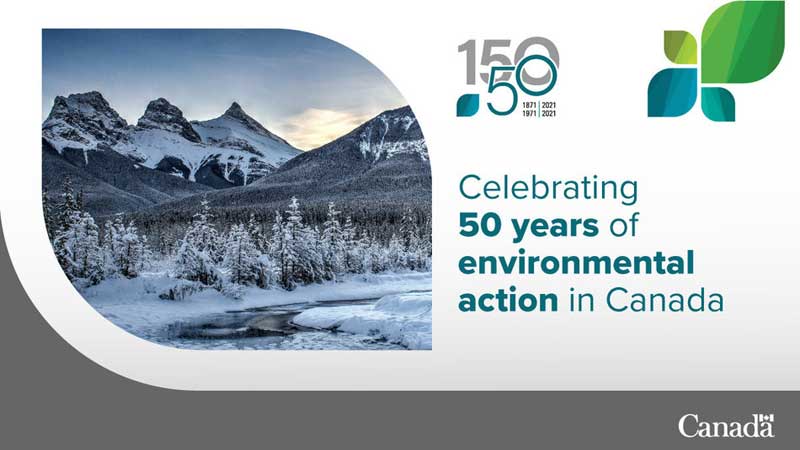Environment Canada celebrates 50th anniversary and 150 years of weather forecasting
Thursday, 14 January 2021 08:26.PM
This year, Environment and Climate Change Canada is celebrating 50 years of protecting Canada's environment. The Meteorological Service of Canada, one of Environment and Climate Change Canada's branches, is celebrating 150 years of providing quality weather-forecasting services and information to Canadians.
In 1971, Canada became one of the first countries in the world to formally establish a department for the environment committed to preserving and enhancing the quality of the natural environment and coordinating policies and programs to achieve those important objectives.
When the Department of the Environment, now Environment and Climate Change Canada, was created 50 years ago, it included a number of previously established organizations such as the Canadian Wildlife Service; the Water Survey of Canada; and the Meteorological Service of Canada, one of the oldest government institutions serving Canadians since 1871.
Today's Environment and Climate Change Canada is a national and international leader in advancing, connecting, and applying scientific understanding to address the most pressing environmental issues.
Environment and Climate Change Canada works to address threats from pollution, monitor water and climate conditions, conserve and restore Canada's natural environment, enforce our environmental laws, and capitalize on the economic opportunity that fighting climate change presents. Environment and Climate Change Canada often works in partnership with provinces, territories, Indigenous Peoples, scientists, and others.
Throughout 2021, Environment and Climate Change Canada and the Meteorological Service of Canada will be celebrating the many significant milestones by showcasing the people—past and present—who contributed to the Department's many achievements. Canadians can find stories and events on the 50th anniversary web page and follow us on social media.
Quick facts
- On May 1, 1871, the Parliament of Canada granted $5,000 to establish a national weather service. George Kingston, the director of the Toronto Observatory and professor at the University of Toronto, established the first national meteorological office in Toronto.
- The Dominion Wildlife Service was created by order-in-council, in November 1947, with a staff of fewer than 30 people from diverse federal agencies. In 1950, the name was changed to the Canadian Wildlife Service and has become internationally recognized.
- Signed in 1972 by Canada and the United States, the Great Lakes Water Quality Agreement, a commitment by the two countries to restore and enhance water quality in the Great Lakes system, represents a significant achievement in international environmental affairs.
- In 1973, the Canada Wildlife Act was proclaimed, allowing for the creation, management, and protection of wildlife areas for wildlife research activities or for the conservation or interpretation of wildlife. Today, 54 national wildlife areas and 1 national marine wildlife area are patrolled and protected by federal wildlife officers, as well as 92 migratory bird sanctuaries.
- As one of the early signatories to the Montreal Protocol on Substances that Deplete the Ozone Layer, in 1987, Canada has made significant progress in reducing the emissions of ozone-depleting substances through strong control measures implemented by federal, provincial, and territorial governments; new technologies; and voluntary actions by industry.
- In 1992, with the start of the UV Advisory Program, Canada was the first country to develop a nationwide UV index and to issue a daily UV index to warn Canadians about the dangers of overexposure to the sun.
- On November 19, 2020, the Minister of Environment and Climate Change delivered on the Government's commitment to legislate Canada's goal of achieving net-zero emissions by 2050 by tabling the Canadian Net-Zero Emissions Accountability Act in the House of Commons. Achieving a net-zero economy by 2050 is required to avoid the worst impacts of climate change.
- On December 11, 2020, the Government introduced A Healthy Environment and a Healthy Economy, Canada's strengthened climate plan of federal policies, programs, and $15 billion in investments to build a stronger, cleaner, more resilient, and inclusive economy. The plan builds off the successes of the Pan-Canadian Framework for Clean Growth and Climate Change and, once fully implemented, it will enable Canada to exceed its current 2030 greenhouse-gas reduction target.
- Today, Environment and Climate Change Canada has over seven thousand dedicated employees working in 111 locations across Canada, in offices, in labs, on the road, and in the field.
SOURCE: Environment and Climate Change Canada
